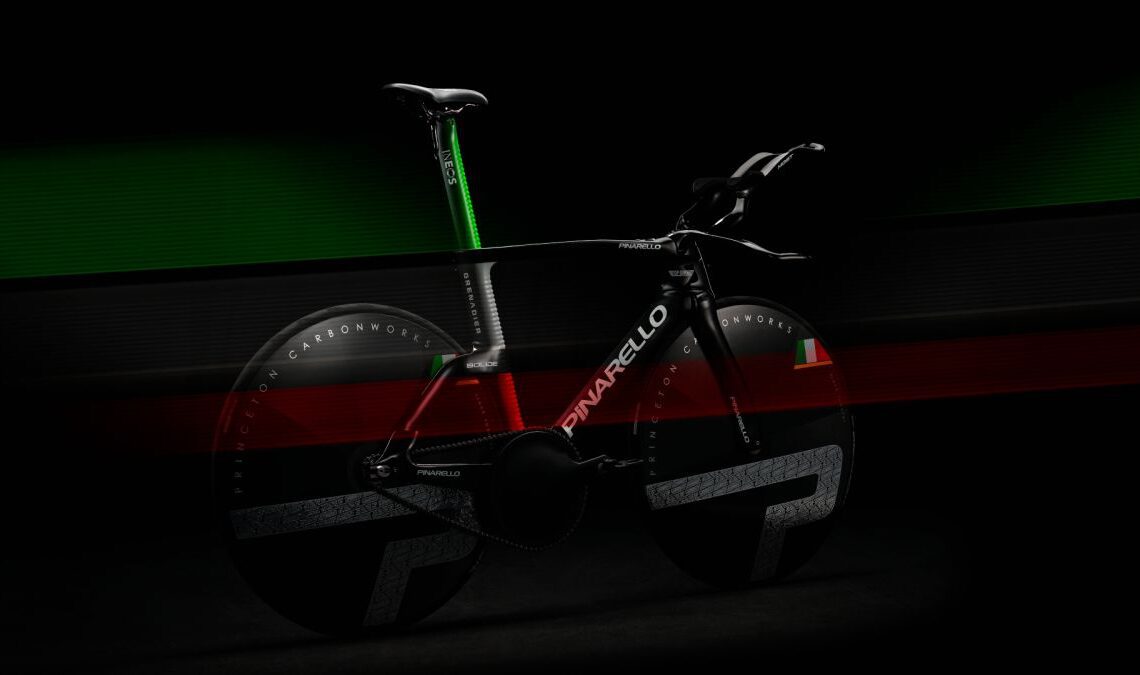What do humpback whales, Dan Bigham and 3D printing machines have in common?
The answer is they’ve all played a part in the design and development of Filippo Ganna’s new track bike for his upcoming UCI Hour Record attempt this month (opens in new tab).
Pinarello appears to have left few stones unturned in its pursuit of creating the fastest bike possible for his ride against the clock on October 8 in the Grenchen velodrome in Switzerland.
The Italian brand, which provides the bikes for Ganna’s Ineos Grenadiers team, has taken both familiar and unfamiliar routes to what it hopes will be the fastest pursuit bike ever built, the Bolide F HR 3D.
(Image credit: Pinarello)
The obvious headline grabber is the manufacturing process used to create Ganna’s new Bolide. 3D printing, Pinarello says, allowed for the introduction of “new shapes and features that are impossible to replicate with existing carbon-fibre techniques”. The result is the first – and Pinarello hopes the fastest – high performance 3D printed bike ever built.
Aerodynamic performance, power transmission and comfort, all designed around Ganna’s “unique anatomy”, were the primary goals. All were made possible, Pinarello believes, in no small part by the powers of 3D printing, which allowed for added internal reinforcement and new tube shapes.
Crucially, it also “drastically cut development time”, with Pinarello no longer “held back” by the time constraints of a traditional, and far slower, carbon-fibre mould process.
Teaming up with the UK-based Metron AE, led by Dimitris Katsanis who designed the iconic UKSI track bike (opens in new tab), the Bolide HR was designed around Scalmalloy, a high-strength scandium-aluminum-magnesium alloy that’s been specifically created for a 3D printing application and is already being used to manufacture commercially available components like the 3D-printed Mythos Elix stem (opens in new tab).
The new frame comprises five parts – the front triangle is made up of three parts, with the seat and chainstays two more. They are then bonded together using an aerospace-grade epoxy. The aforementioned reinforcement comes in the form of titanium used on both the fork head and the handlebar extensions – two high stress areas of the bike.
(Image credit: Pinarello )
To measure the bike’s strength a copy of the frame was sent to Germany for independent testing. The Bolide passed with flying colours, becoming the first fully-rideable UCI-compliant aero bike…

